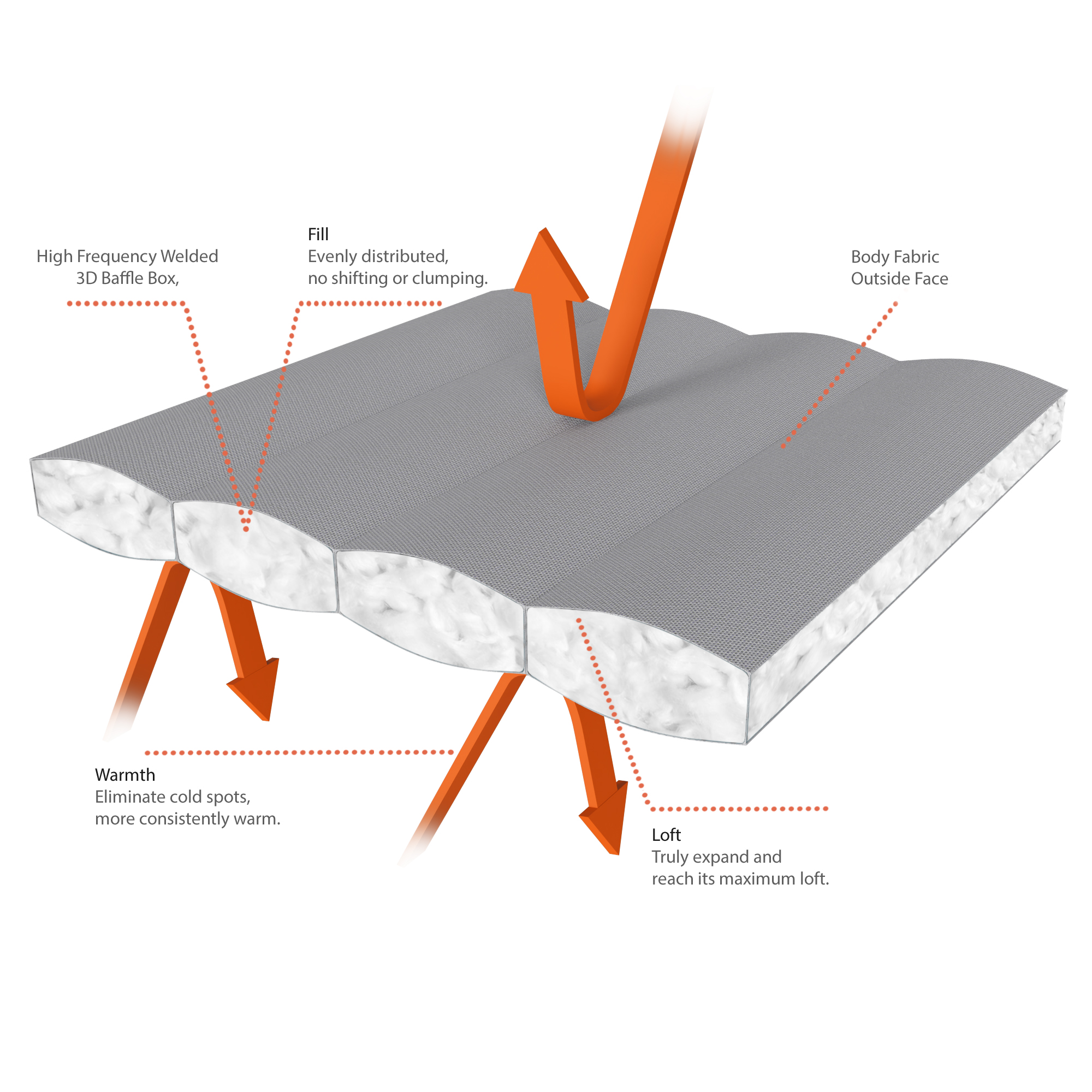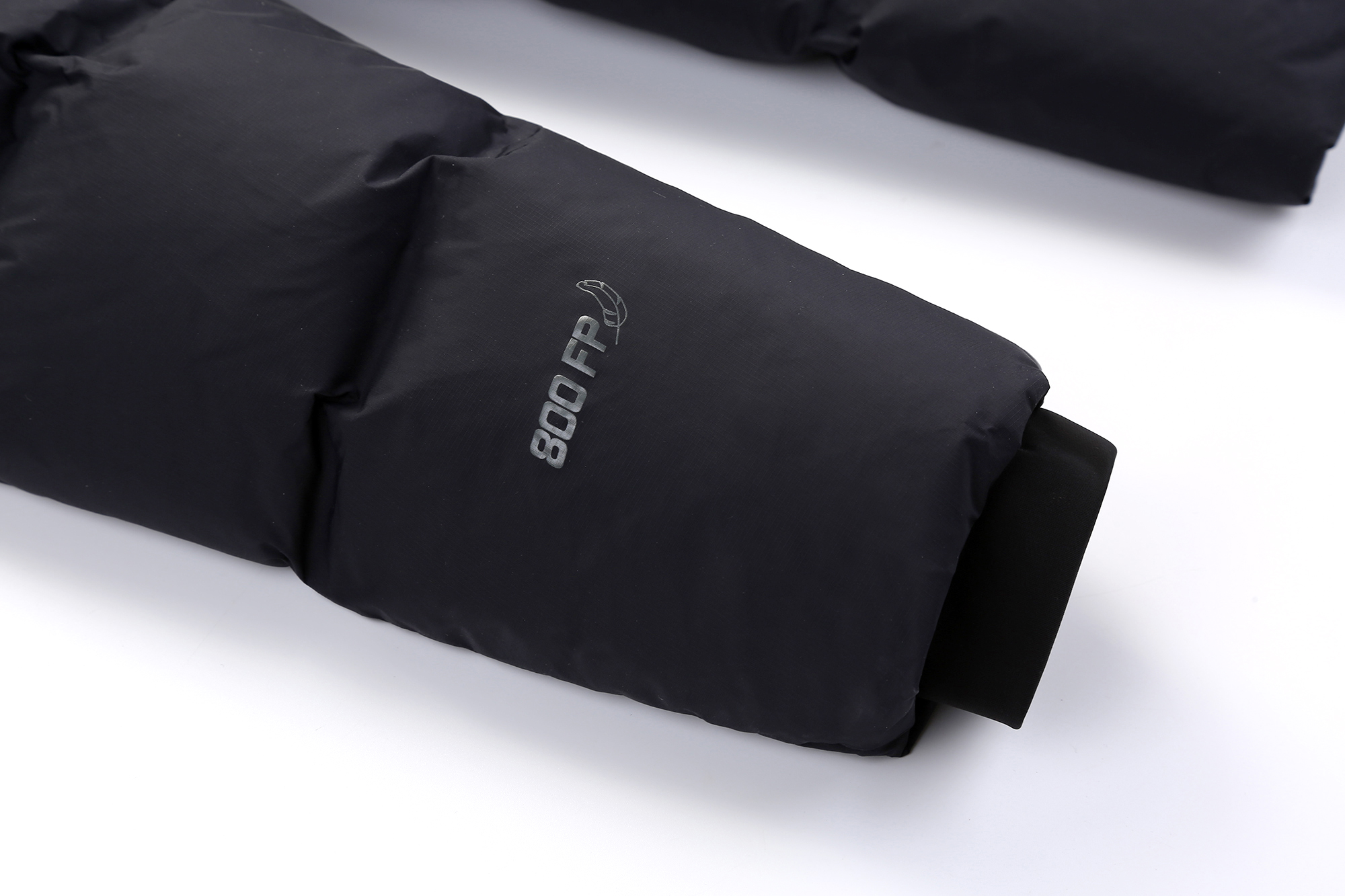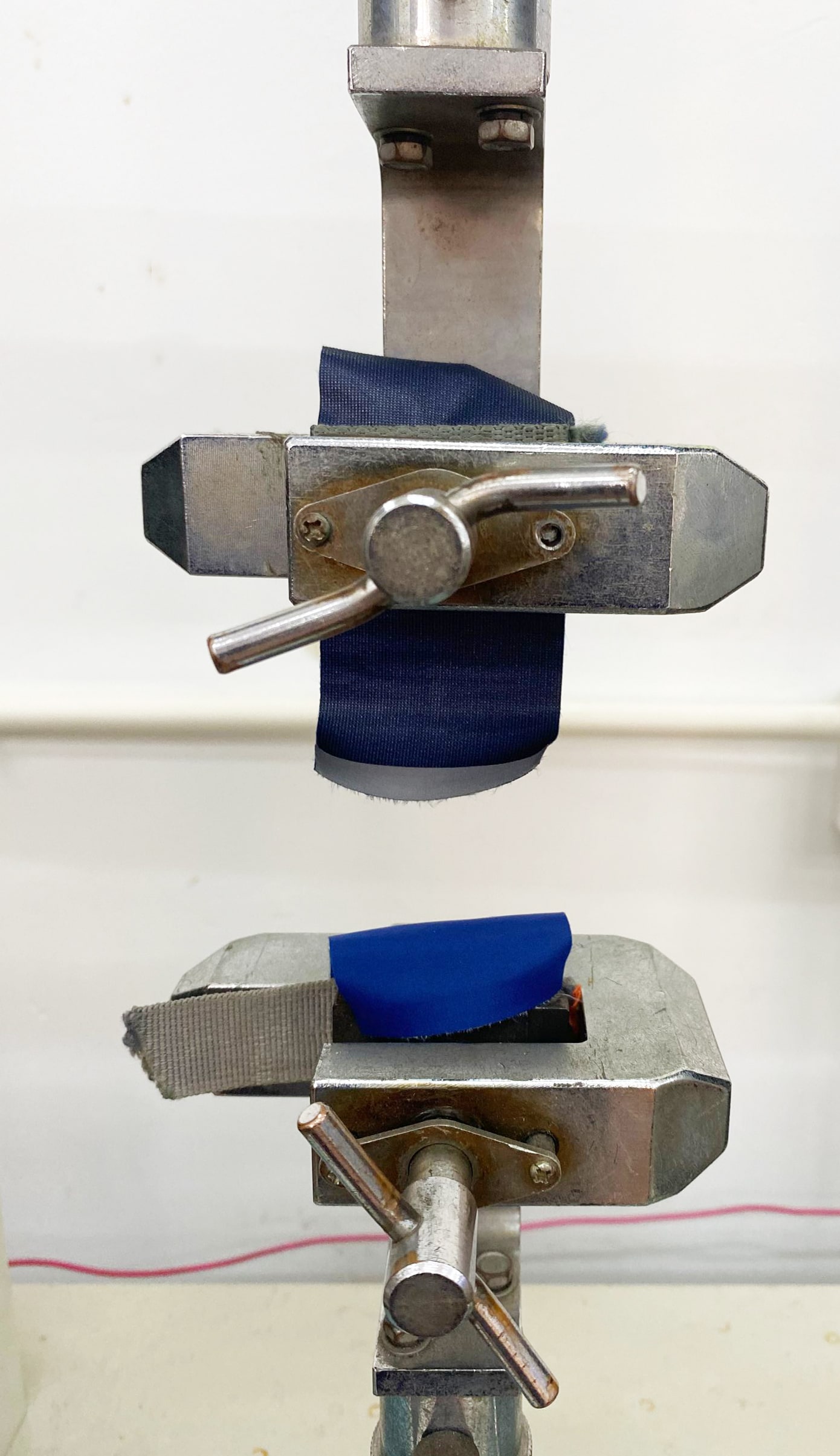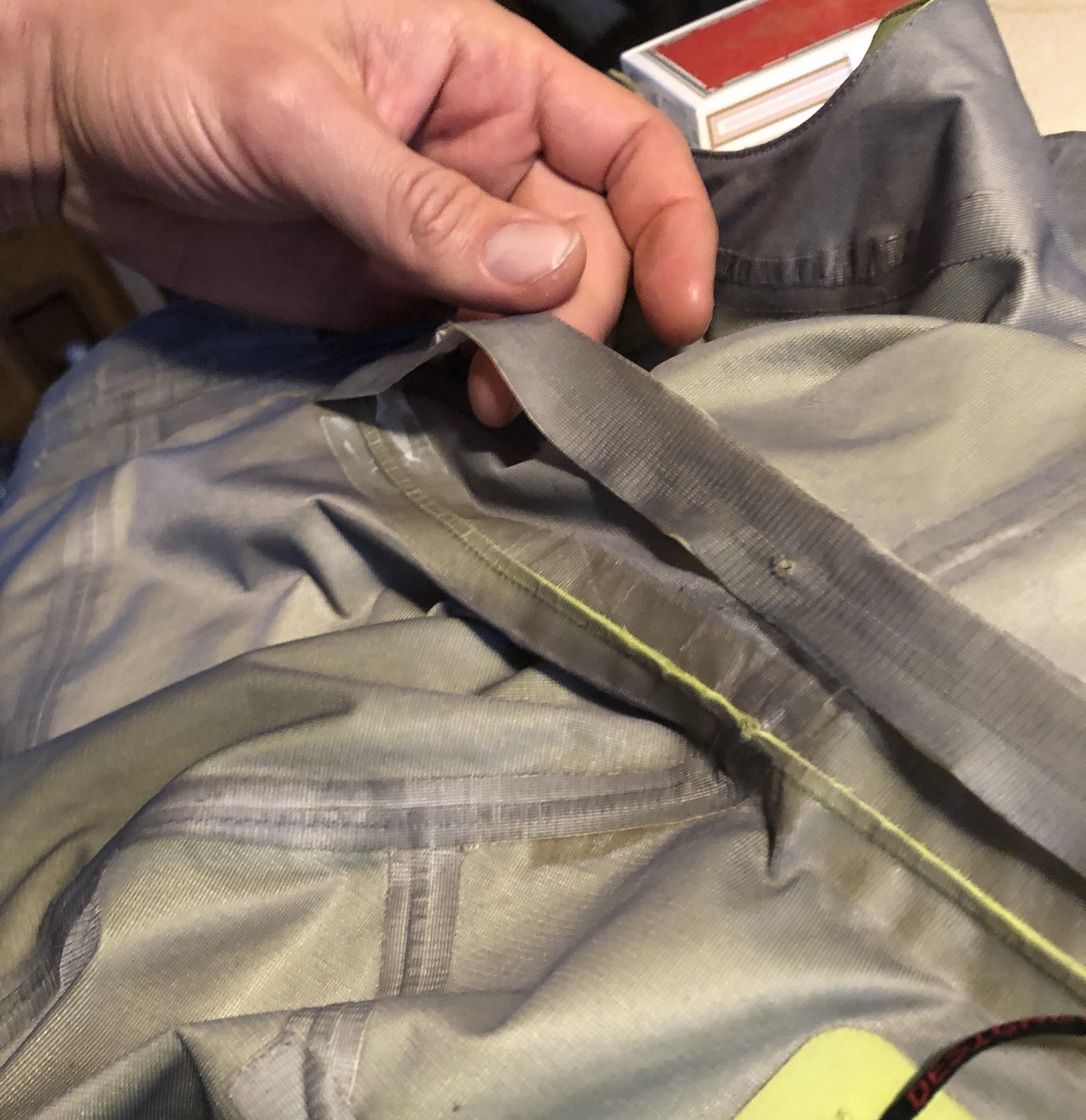Testing and Science
- Home
- Testing and Science
How do we calculate warmth?
We continually compare and test our Stealth’s welded seams against the comparable stitched alternatives using recognised scientific testing methods.
We use Intertek, a renowned, independent third-party quality assurance provider, to do the testing for us. They test comparable sewn and welded panels to determine which retains heat the best.
We created two identical down-filled pillows in a recent thermal resistance test under BS EN31092-1993 guidelines. The only difference was the seam construction, one pad used Stealth’s welded seams whilst the other was constructed using a comparable stitched alternative.
Both samples used the same 100% Nylon woven fabric, weighing 62gm/sqm, and filled with the same 90% Grey Goose down fill using a baffle box construction.
The results were terrific!
Stitched product warmth returned an insulation rating of: 1.2 CLO*
Stealth welded seams returned an insulation rating of: 3.3 CLO*
With no puncture holes caused by the needle in stitching, Stealth’s welded seam panel was over 90% more insulating than the stitched alternative. In the real world of performance gear, this means that for comparable levels of warmth, a Stealth style may be made of less filler, meaning it’s lighter for the same level of insulation.
*What’s CLO?
CLO is a value that describes the degree of insulation provided by an article of clothing. A CLO value of 1 equals the amount of clothing required by a resting human to maintain thermal comfort at a room temperature of 21 degrees Celsius, or 71 degrees Fahrenheit.



How do we test the strength of our seams?
We test the strength of our seams using a recognised pull method, called a tensile strength test.
Specifically, we use an ASTM D1683 test method, used in seam engineering to determine the sewn seam strength in woven fabrics by applying a force perpendicular to the stitched seams until seam failure occurs.
The unit of fabric breaking strength is “Newton (N)”, which is used to evaluate the capability of the fabric to resist tensile damage.
In a recent test, we created two identical swatches comprising two parts, using the same 275gms 100% Nylon woven material. The only difference was the construction, one swatch used Stealth’s welded seams to combine the two parts, whilst the other was stitched together by a technician.
The pull test was repeated by technicians in a laboratory three times with the average breaking force noted in Newtons. The results were remarkable!
The stitched seam sample returned a tensile strength of: 240.36N
Stealth’s welded seam sample returned a tensile strength of: 385.03N
This particular test showed that the Stealth’s welded seam was 46% stronger in a pull test. The reason for this is simple; when seams are stitched, the needles make puncture holes through the material – it’s these holes that make traditional stitched seams prone to breakage and tearing.
The problem with delamination.
Seam delamination is one of the most significant problems in performance gear.
Current production methods of seam taping and bonding use glue to help waterproofing tape adhere to the seams.
But with changes in humidity, wear, and time, the glue becomes unstable and consequently fails to adhere. The delamination leads to seam tape coming away from the seams; seams then leak and fail.
But, unlike our competitors who use glue to weld a seam taping in place, we at Stealth use a revolutionary seam welding technology that uses no stitching, no external heat and no glue.
So, no glue and a combination of high frequency and sonic welding = no delamination and a seam that’s more durable than ever before. It doesn’t get better than that.



